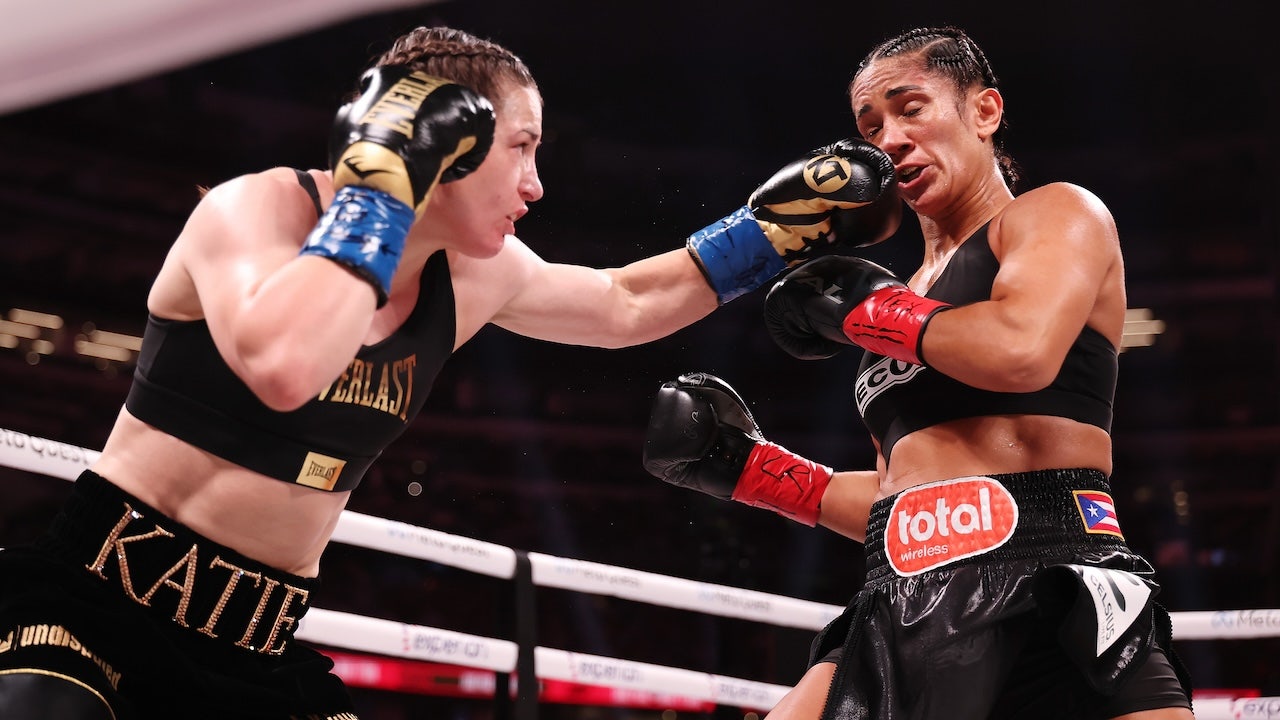When catcher Willson Contreras of the St. Louis Cardinals was struck on his left arm by a swing Tuesday night, it was felt by former and current backstops all over the big leagues. Everyone from Salvador Perez in Kansas City to managers like Bruce Bochy and Rob Thomson.
It was especially painful for his Contreras’ brother, William.
“It’s hard for me, too, because I love my brother. He plays every day. But he’ll be back,” said William Contreras, a catcher with the Milwaukee Brewers.
Willson Contreras’ broken left forearm was a scary reminder of the increasing danger for catchers who have moved closer to home plate over the years in an effort to steal strike calls at the bottom of the zone — and sometimes even lower.
When a hitter with a long swing stands at the back of the batter’s box, there is precious little room to maneuver.
“The risk is high. We just experienced it,” St. Louis manager Oliver Marmol said Wednesday. “It’s a huge risk, and it’s been talked about. Even in the offseason it was a topic of discussion because there was an increase in them. The more catchers are evaluated on framing, the closer they’re getting to the hitter to get that low pitch.”
Contreras got hurt with New York Mets slugger J.D. Martinez at the plate in the second inning. After he was hit by Martinez’s swing, the three-time All-Star tumbled over in obvious pain. He is expected to be sidelined at least six weeks following surgery for a fractured forearm.
“I’ve never seen anything like that,” said Royals manager Matt Quatraro, who caught in college and the minor leagues. “I feel terribly for him. I didn’t go back and watch it in super slow motion, but it’s devastating for him.”
Martinez was awarded first base on one of 33 catcher interference calls through Tuesday’s games, a slight increase from 30 at the same point last year, according to Sportradar. There were 96 catcher interference calls during the 2023 season, up from 74 the previous year and the majors’ highest total since at least 1974.
The increase has attracted the attention of Major League Baseball, which has held conversations with teams about the calls and positioning by catchers.
“MLB addressed it in spring training with us,” Oakland manager Mark Kotsay said, “in terms of talking about it with our catchers and making them aware that the catcher injury has increased over the last two years, especially with concussions and being hit in the head. So there’s definitely a fine line.”
Contreras has been one of St. Louis’ best hitters this season, so it’s a costly injury for the Cardinals. Bochy, the Texas manager, said that risk has affected how the Rangers position their catchers.
“We back them off just a hair, because, I tell you, the last thing you want to do is not just get hit in an arm, but maybe in the back of the head,” said Bochy, a former big league catcher. “That’s how close they’re getting, especially when the ball’s low.”
If the plays continue, Major League Baseball could bring the trend to its competition committee — which includes six owners, four players and one umpire — as part of its process for addressing safety concerns.
In the meantime, players and teams are identifying the hitters who put their catchers at increased risk.
Oakland outfielder Esteury Ruiz and Houston slugger Kyle Tucker drew the most catcher interference calls in 2023 with seven apiece, two more than White Sox outfielder Luis Robert Jr. and Shohei Ohtani in his final season with the Angels. Padres infielder Jake Cronenworth has drawn three such calls already this year.
“We’re lucky enough to have good analytics on what guys are high risk of catcher’s interference, so it gives us kind of the depth piece to be able to move back or move forward on guys,” Yankees catcher Austin Wells said.
Nationals catcher Riley Adams said he makes notes of hitters whose swing paths could put him in danger. One is Ohtani, who nicked Adams’ glove earlier this season.
“Every hitter in the league has a different path. And it’s also a little bit about trying to understand which hitter is the guy that gets the barrel in the zone further back,” Adams said. “So you’ve just got to find that balance between getting too close versus being so far away that you make those pitches at the bottom of the zone look a lot lower.”
___
AP Baseball Writer Janie McCauley, AP Sports Writers Ben Nuckols and Dan Gelston, and AP freelance reporters David Smale, Warren Mayes and Larry Fleisher contributed to this report.
___
AP MLB: https://apnews.com/hub/mlb
Copyright 2024 The Associated Press. All rights reserved. This material may not be published, broadcast, rewritten or redistributed without permission.





